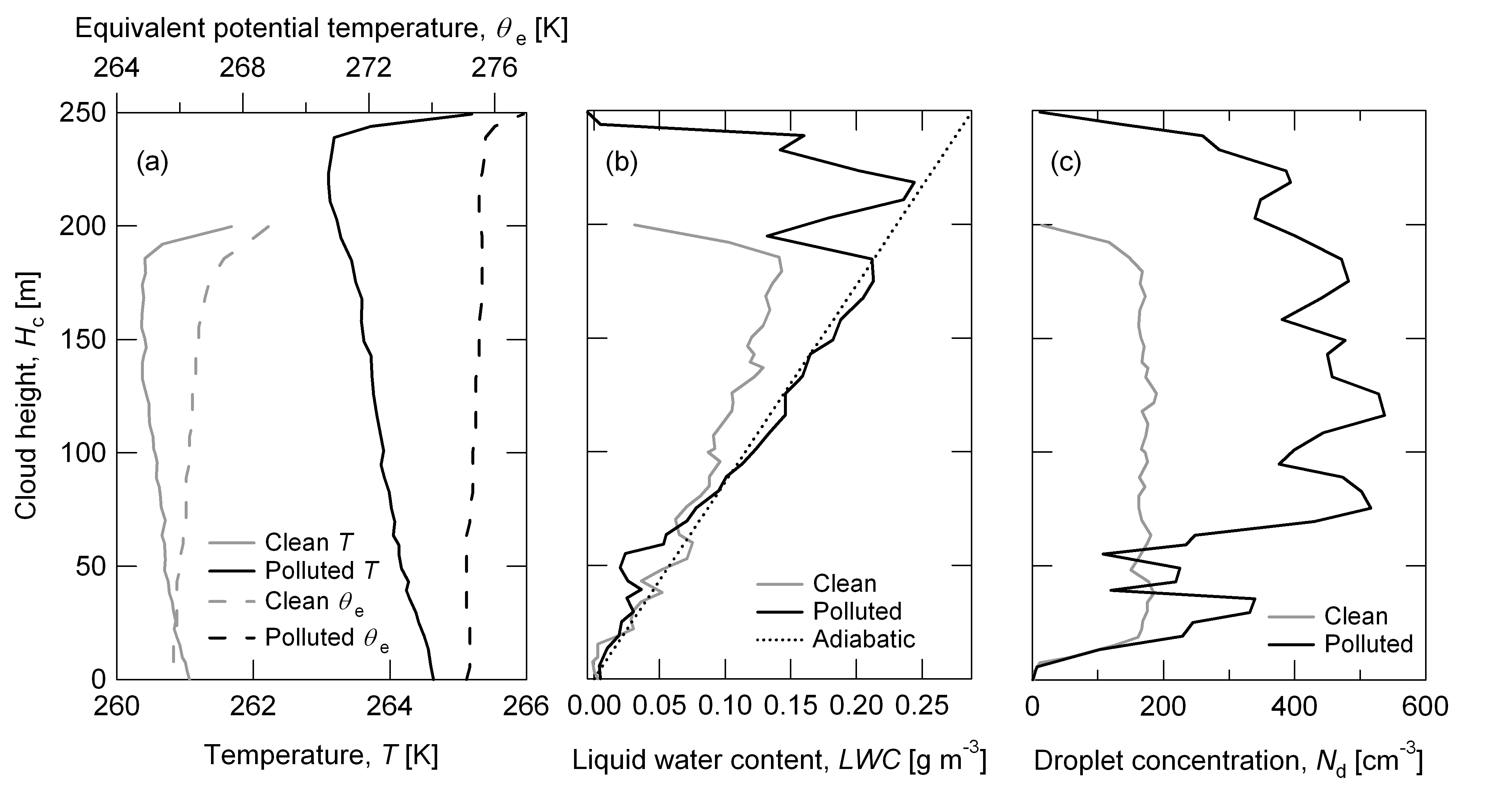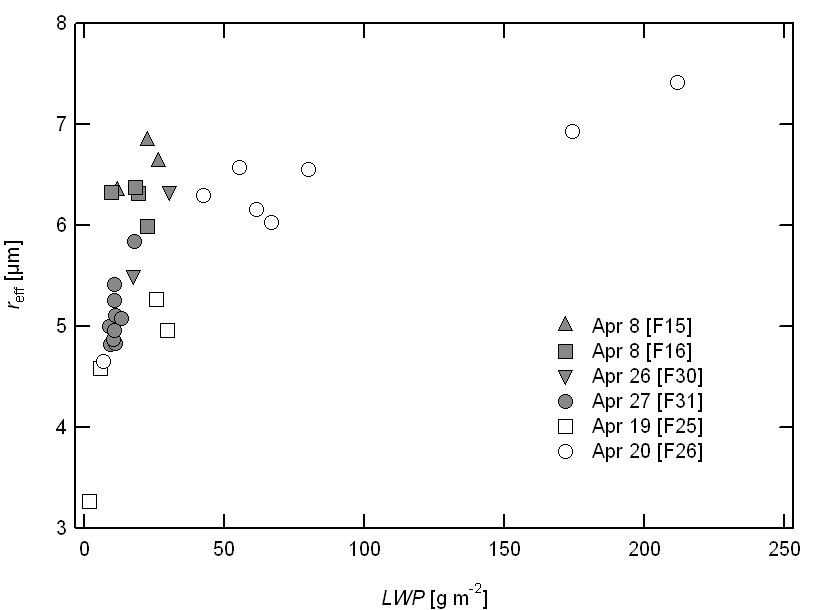Factors Influencing the Microphysics and Radiative Properties of Liquid-Dominated Arctic Clouds
Submitter:
Earle, Michael — Environment Canada
Liu, Peter — Environment Canada
Area of research:
Cloud Distributions/Characterizations
Journal Reference:
Science
Atmospheric aerosol particles can indirectly influence the Earth’s radiative balance through their interactions with clouds and precipitation. These complex interactions, which are modulated by aerosol properties and local meteorology, represent a key uncertainty in global climate models. Field measurement studies of aerosol-cloud-precipitation interactions are therefore of critical importance, particularly in the Arctic, which has shown enhanced sensitivity to climate change. Accordingly, the DOE Indirect and Semi-Direct Aerosol Campaign (ISDAC) was conducted in Alaska in April 2008 to improve process-based understanding of aerosol indirect effects.
Impact
In the present study, aircraft measurements obtained during ISDAC are used to investigate the factors influencing the microphysics and radiative properties of low-level, liquid-dominated Arctic clouds. Analysis was based on vertical profiles through cloud, as well as horizontal flight legs below cloud for the characterization of aerosol. Two distinct aerosol-cloud regimes were identified from the data. More polluted cases, with higher aerosol particle number concentrations below cloud (Na > 500 cm-3), were correlated with warmer, geometrically thicker clouds, with higher droplet number concentrations (Nd) and liquid water paths (LWP) relative to cleaner cases with Na < 250 cm-3 below cloud. These differences are illustrated in Figure 1 for representative cases in each of the aerosol-cloud regimes. On account of their larger geometric thicknesses and higher Nd, the clouds in polluted cases also had higher optical depths (τ) and albedo (A), and hence attenuate and reflect solar radiation more effectively than the thinner clouds in clean cases.
Despite the differences noted above, the average cloud droplet sizes—considered in terms of the mean effective radii (reff)—were similar for both aerosol-cloud regimes, on account of the enhanced LWP in polluted cases (Figure 2). This enhancement can be explained by both meteorological (temperature, inversion height) and microphysical factors. With regard to the latter, the enhanced Na in polluted cases provides more potential cloud-condensation nuclei (CCN); for a given cloud LWP, this allows for the formation of more droplets of smaller size (first aerosol indirect effect). Vertical profiles of reff in cloud indicated that droplets were smaller than the critical size for drizzle formation; hence, the enhanced CCN and droplet formation in polluted cases likely limit droplet growth, suppressing the formation of precipitation (second aerosol indirect effect). Profiles through cloud in clean cases also showed reff values below the drizzle size threshold; however, given the significantly lower Na for these cases, it is likely that larger droplets formed and precipitated out, depleting cloud liquid water. As well, light ice-phase precipitation was often observed in clean cases, providing an additional mechanism for liquid water depletion, consistent with the lower LWP observed for these cases.
Adiabatic cloud parcel model simulations were used to assess the role of aerosol physicochemical properties in the observed differences between the aerosol-cloud regimes. Characterization of aerosol particles below-cloud indicated that the accumulation mode diameter of particles was larger for polluted cases and that the composition was dominated by biomass burning particles, often internally mixed with organics and sulfate. In clean cases, organics were the main chemical component and were mixed to varying extents with sulfate and biomass burning products. The model results showed that the peak water vapour supersaturation attained in cloud was higher for clean cases, resulting in the activation of almost all particles. For polluted cases, on the other hand, the simulation results indicated a lower peak supersaturation in cloud due to the competition for water vapour among the more numerous particles, resulting in the preferential activation of larger and/or more hygroscopic particles. These differences in activation and the initial sizes of cloud droplets may have ramifications for the observed reff, though it is difficult to separate their contribution from the other microphysical and meteorological factors considered above.
Summary
In summary, aircraft measurements obtained during ISDAC and related parcel model simulations have been used to illustrate the complex relationships among aerosols, cloud microphysics, cloud radiative properties, and meteorology in liquid-dominated Arctic clouds. Additional studies are required to disentangle the relative contributions of these factors, in order to better understand, describe, and predict aerosol indirect effects in the Arctic.



